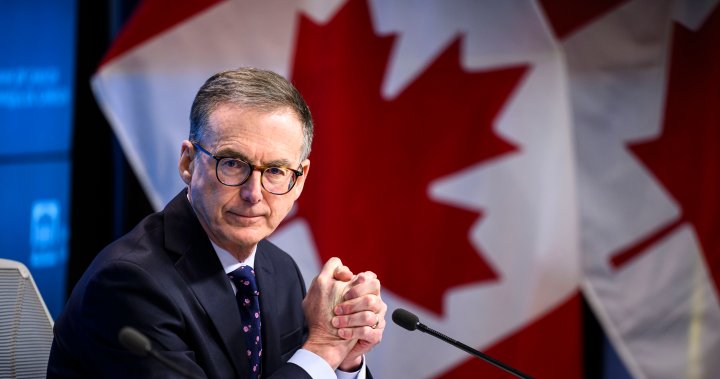Canada
Bank of Canada governor’s tariff warning: ‘There won’t be a bounceback’

Canada’s Economic Landscape: Navigating the Impact of U.S. Tariffs
Introduction: A Warning from the Bank of Canada
In a recent address, Bank of Canada governor Tiff Macklem sounded the alarm on the potential economic fallout from broad-based U.S. tariffs. Macklem emphasized that such measures could inflict lasting damage on Canada’s economy, unlike the transient effects of the COVID-19 pandemic. The key takeaway from his speech is the permanent structural changes these tariffs could usher in, affecting various sectors and ultimately the nation’s economic output.
The Economic Downturn Beyond COVID-19
Macklem drew a stark comparison between the economic impact of the COVID-19 pandemic and the potential effects of U.S. tariffs. While the pandemic led to a sharp recession followed by a swift recovery, tariffs would result in a prolonged downturn with no quick rebound. This distinction highlights the enduring nature of tariff-induced economic harm, underscoring the need for proactive measures to mitigate their impact.
The Export Sector and the Canadian Dollar
Canada’s export sector would be the first to feel the pinch of U.S. tariffs, Macklem noted. As Canadian goods become more expensive for U.S. consumers, demand would likely decrease. Although a weakening Canadian dollar might offer some relief, it wouldn’t offset the overall decline. The Bank of Canada estimates a significant drop in exports in the first year, leading to reduced production and job losses, which would resonate across the economy given exports’ substantial contribution to national income.
Broader Economic Implications for Households and Spending
The ripple effects of tariffs extend beyond the export sector, impacting household incomes and consumer spending. With less disposable income, Canadians might cut back on major purchases, from vehicles to housing. Additionally, retaliatory tariffs could drive up inflation, further squeezing household budgets. Macklem projected a notable decline in consumer spending, illustrating the tariffs’ far-reaching consequences for the average Canadian.
Structural Reforms: A Path to Mitigation
To cushion the blow, Macklem suggested structural reforms to enhance economic resilience. Easing interprovincial trade barriers and harmonizing regulations could reduce internal trade friction. Improving labor mobility by recognizing certifications across provinces could also help businesses adapt. These changes, while not a complete solution, offer a strategy to lessen the tariffs’ impact and foster long-term economic flexibility.
Conclusion: Charting a Resilient Economic Future
In conclusion, Macklem’s warnings highlight the critical need for vigilance and strategic planning. The potential imposition of U.S. tariffs poses significant risks to Canada’s economy, necessitating a multifaceted response. By understanding the tariff implications and implementing targeted reforms, Canada can navigate this challenge, ensuring a more resilient economic landscape for the future.